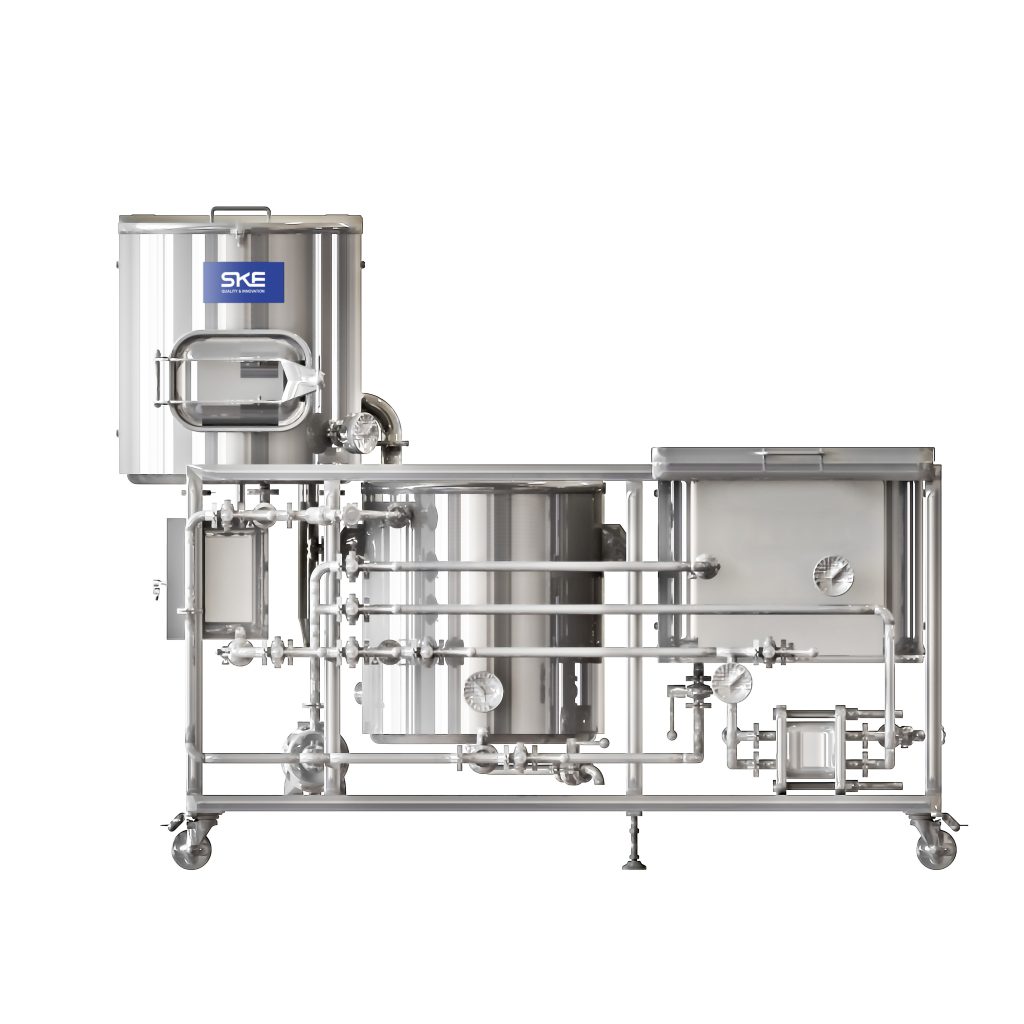Introduction

Welcome to the exciting world of home beer brewing! If you’re passionate about beer and have ever dreamt of crafting your own unique brews, you’ve come to the right place. This guide will walk you through everything you need to know about setting up the best home beer brewing system tailored to your needs and preferences. We’ll cover different system types, essential equipment, and even a step-by-step brewing process. By the end, you’ll be well-equipped to embark on your home brewing journey.
Why Brew Your Own Beer?
Before diving into the specifics of home beer brewing systems, let’s explore why so many people are drawn to this rewarding hobby:
- Creativity and Customization: Home brewing allows you to experiment with different ingredients, flavors, and styles, creating beers that perfectly match your taste. You can adjust hop levels, malt profiles, and even add unique ingredients like fruits or spices. This level of control is unmatched by commercial brewing.
- Cost Savings: Brewing your own beer can be significantly cheaper than buying commercial craft beers, especially in the long run. The initial investment in equipment pays off quickly as you brew more batches.
- Freshness and Quality Control: You have complete control over the ingredients and process, ensuring the highest quality and freshness in every batch. You know exactly what goes into your beer, avoiding any unwanted additives or preservatives.
- Fun and Educational: Home brewing is a fascinating hobby that combines science, art, and a bit of patience. You’ll learn about the chemistry of fermentation, the art of recipe formulation, and the history of beer itself.
Types of Home Beer Brewing Systems
There are several types of home beer brewing systems available, each with its own set of advantages and disadvantages:
- Extract Brewing Systems: These are the most beginner-friendly systems, using pre-made malt extract to simplify the brewing process. Extract brewing eliminates the need for mashing, making it a quick and easy way to get started. It’s a great option for those who want to focus on the creative aspects of brewing without the complexities of all-grain.
- Partial Mash Brewing Systems: A hybrid approach that combines extract brewing with a small amount of grain steeping to add complexity to the beer. Partial mash allows you to introduce some grain character and extract more nuanced flavors. It’s a good stepping stone between extract and all-grain brewing.
- All-Grain Brewing Systems: These systems involve brewing from scratch using only grains, water, hops, and yeast, offering the most control over the final product. All-grain brewing allows you to customize every aspect of the beer, from the grain bill to the mash temperature. It’s the most rewarding, but also the most demanding, brewing method.
Essential Components of a Home Beer Brewing System
Regardless of the type of system you choose, there are some essential components you’ll need:
- Brew Kettle: A large pot for heating water and wort (the sugar-rich liquid that will ferment into beer). The size of your brew kettle will depend on the batch size you plan to brew.
- Fermentation Vessel: A container (carboy or bucket) for fermenting the wort into beer. Carboys are typically made of glass, while buckets are usually plastic.
- Airlock and Bung: To prevent contamination and allow CO2 to escape during fermentation. The airlock creates a one-way valve, allowing CO2 to exit while preventing air from entering.
- Bottling Equipment: Bottles, caps, and a capper for packaging your finished beer. You can also use kegs and a kegging system for dispensing your beer.
- Thermometer: To monitor temperatures during the brewing process. Accurate temperature control is crucial for both mashing and fermentation.
- Hydrometer: To measure the specific gravity of the wort, indicating the sugar content. The hydrometer helps you track the progress of fermentation and determine the alcohol content of your beer.
- Sanitation Supplies: Essential for keeping your equipment clean and preventing unwanted bacteria or wild yeast from spoiling your beer. Sanitizing your equipment is the most important step in preventing off-flavors.
Choosing the Right Home Beer Brewing System for You
When selecting a home beer brewing system, consider the following factors:
- Experience Level: Beginners may want to start with an extract system, while experienced brewers might prefer all-grain systems. Your experience level will determine how comfortable you are with the more complex aspects of brewing.
- Budget: Home brewing systems range in price from a few hundred to several thousand dollars. Consider how much you’re willing to invest in your new hobby.
- Space: Make sure you have enough space to accommodate your brewing equipment. All-grain systems, in particular, can require a fair amount of space.
- Time Commitment: All-grain brewing requires more time and attention than extract brewing. Think about how much time you’re willing to dedicate to brewing.
Step-by-Step Guide to Home Beer Brewing
Here’s a simplified overview of the home beer brewing process:
- Preparation: Gather your ingredients, sanitize your equipment, and heat your brewing water. Proper preparation is key to a smooth and successful brew day.
- Mashing (All-Grain): Combine crushed grains with hot water to convert starches into sugars. Mashing is a crucial step in all-grain brewing that determines the fermentability of the wort.
- Lautering (All-Grain): Separate the sweet wort from the spent grains. Lautering involves draining the wort from the mash tun while leaving the grain behind.
- Sparging (All-Grain): Rinse the remaining sugars from the grains. Sparging ensures that you extract as much sugar as possible from the grains.
- Boiling: Boil the wort with hops to add bitterness, flavor, and aroma. The boil also sterilizes the wort and isomerizes the hop alpha acids.
- Cooling: Cool the wort to the appropriate fermentation temperature. Rapid cooling is important to prevent the growth of unwanted bacteria.
- Fermentation: Add yeast to the wort and allow it to ferment for several weeks. During fermentation, the yeast converts the sugars into alcohol and CO2.
- Bottling: Bottle your finished beer with priming sugar for carbonation. Priming sugar provides the yeast with a small amount of sugar to create carbonation in the bottles.
- Aging: Allow the beer to age and carbonate in the bottles for a few weeks. Aging allows the beer to develop its full flavor and complexity.
- Enjoying: Savor the fruits of your labor! Sharing your homebrewed beer with friends and family is one of the most rewarding aspects of the hobby.
Home Beer Brewing System Comparison

| Feature | Extract System | Partial Mash System | All-Grain System |
|---|---|---|---|
| Complexity | Beginner | Intermediate | Advanced |
| Cost | Low | Medium | High |
| Time Commitment | Low | Medium | High |
| Control | Limited | Moderate | High |
| Flavor | Good | Very Good | Excellent |
Conclusion
Home beer brewing is a fantastic hobby that offers endless opportunities for creativity, learning, and enjoyment. By choosing the right home beer brewing system and following the steps outlined in this guide, you’ll be well on your way to crafting delicious, unique beers that you can proudly share with friends and family. Remember to start small, be patient, and most importantly, have fun! The world of homebrewing is waiting for you.
FAQ
Q: How long does it take to brew a batch of beer?
A: The entire process can take anywhere from 4-8 hours for brewing, plus several weeks for fermentation and aging. All-grain brews typically require longer brew days than extract brews.
Q: Is home beer brewing legal?
A: In most countries, home beer brewing is legal for personal consumption, but it’s essential to check your local laws and regulations. Commercial brewing, even on a small scale, requires specific licenses and permits.
Q: What are some common mistakes to avoid?
A: Common mistakes include poor sanitation, temperature control issues, and incorrect ingredient measurements. Taking detailed notes and double-checking your calculations can help prevent these problems.

